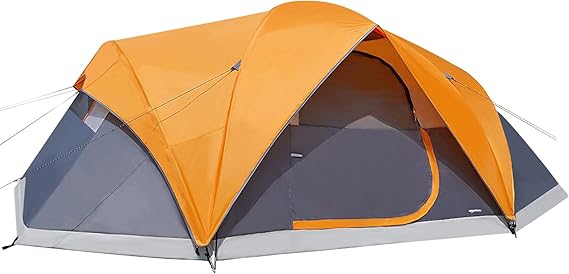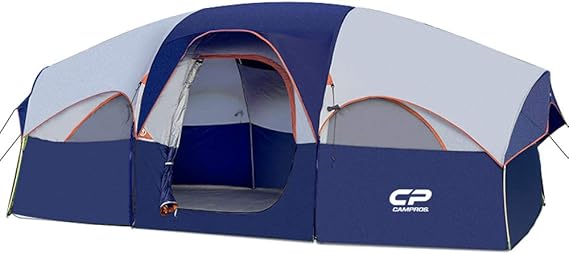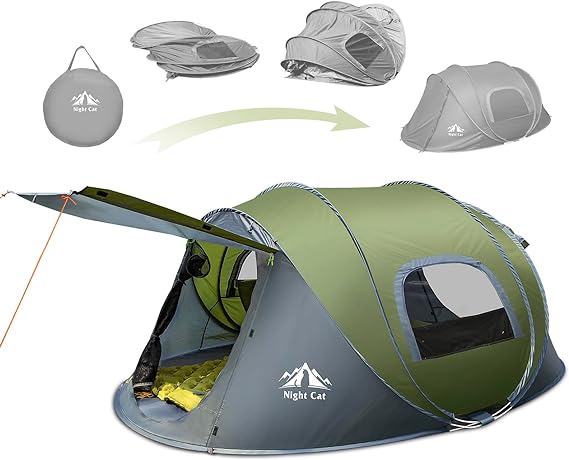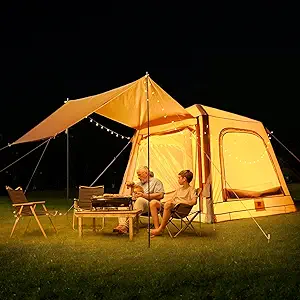Inflatable camping tent have been making waves in the outdoor community for their ease of setup and innovative design. But the burning question remains: can these air-filled shelters truly withstand high winds, or are they just a fair-weather friend? Let’s dive into the facts and find out if inflatable camping tents are built to brave the storm or if they’ll blow away with the breeze.
What Are Inflatable Camping Tent?
Before we get to the heart of the matter, let’s understand what inflatable camping tents are. Unlike traditional tents that use poles made of aluminum or fiberglass for structure, inflatable tents rely on air beams. These air beams are essentially inflatable tubes that replace rigid poles, providing support and structure once they’re filled with air. You simply pump air into them, and voila – your tent is ready!
Can Inflatable Tents Stand Strong Against High Winds?
Now, let’s get to the crux of the matter. Inflatable camping tents might seem fragile at first glance, but they actually possess unique characteristics that help them withstand wind better than one might expect.
Flexibility in High Winds: Traditional tents with rigid poles can break or snap under high wind pressure. Inflatable tents, on the other hand, have a bit of a secret weapon: flexibility. The air beams can bend and flex with the wind, which means they’re less likely to break. This flexibility allows the tent to absorb the impact of strong gusts, reducing the risk of damage.
Low Center of Gravity: Many inflatable tents are designed with a low profile, which means they have a lower center of gravity. This design makes them less likely to tip over when hit by strong winds. A lower profile also presents less surface area for the wind to push against, which can help keep the tent grounded.
Anchoring Systems: Inflatable tents come with robust anchoring systems, including multiple guy lines and heavy-duty stakes that help secure the tent to the ground. Proper anchoring is crucial when facing high winds, and many inflatable tents are designed with this in mind.
- WeatherTec system’s welded corners and inverted seams keep water from getting in
- Easy setup in only 10 minutes. Good for backpacking
- Weathertec system with patented welded floors and inverted seams to keep you dry
- Large windows and a ground vent for superior ventilation
- Measures 7 x 5 feet with 4-foot center height
Real-Life Performance: Inflatable Tents vs. High Winds
So, what happens when you pitch an inflatable tent in a real-life windstorm?
Many campers who have tested inflatable tents in windy conditions report surprising results. The key factor is not necessarily the inflatable nature of the tent but how well it’s anchored and the design quality. Some inflatable tent have been tested to withstand winds up to 55 mph (around 88 km/h), which is comparable to traditional tents.
However, not all inflatable tents are created equal. High-quality models from reputable brands are more likely to have better materials, stronger seams, and more effective anchoring points. Cheaper models might not hold up as well in extreme conditions. Always check the wind resistance rating of any tent before purchasing.
About this Item:
- polyester
- Imported
- ROOMY INTERIOR: Straight wall design with 72in center height create more space to stand up changing and move.
- WEATHER PROTECTION: High-tech coating material with sealed seams and waterproof strip guarantees water-resistant.
- EASY SETUP & COLOR COATED POLES: No particular skills needed, 2 people could set up the tent easily in 5 min.
- GREAT VENTILATION: Mesh tent top and doors offer great views and ventilation.
- 2 ROOMS: A separated curtain can be used as room divider and projector screen.
- PACKAGE INCLUDED: Tent body, Rainfly with attached guylines, Tent Poles, Stakes, 1 Room Divider, Carry Bag, Warranty Card.
Tips for Using Inflatable Tents in Windy Conditions
If you’re planning to use an inflatable camping tent in potentially windy conditions, here are some tips to maximize its performance:
- Choose Your Site Wisely: Avoid exposed ridges or open areas. Set up camp in a sheltered spot, like near a line of trees or behind a natural windbreak.
- Double-Check Your Anchors: Make sure all guy lines are taut and secure. Use extra stakes if needed, and consider bringing heavier-duty stakes for rocky or sandy ground.
- Inflate Properly: Don’t overinflate your tent! Too much pressure can make the air beams too rigid, reducing their ability to flex in the wind. Follow the manufacturer’s guidelines for optimal pressure.
- Keep an Eye on the Weather: Be prepared to reinforce your tent or make adjustments if a storm is coming.
Pros of Inflatable Camping Tent:
- Quick and Easy Setup: No more fumbling with poles in the dark! Inflatable tents can be set up in minutes with a pump.
- Lightweight and Compact: Perfect for campers who want to travel light.
- Flexible and Portable: Easy to pack down and transport, ideal for backpacking or car camping.
Cons of Inflatable Camping Tent:
- Dependence on Air Beams: If a puncture occurs, it can compromise the structure.
- Higher Cost: Generally, they tend to be more expensive than traditional tents.
- Reliance on Air Pumps: No pump, no tent!
Conclusion: Are Inflatable Tents Worth It?
So, can inflatable camping tent handle high winds? The answer is a cautious “yes.” They certainly have their advantages, especially for campers looking for a quick and easy setup. When properly anchored and used in the right conditions, high-quality inflatable tents can perform just as well as traditional ones. However, it’s essential to be mindful of the specific conditions you’ll be camping in and the quality of the tent you choose.
Inflatable camping tents are not a one-size-fits-all solution. If you’re an adventure camper who frequently faces harsh weather, investing in a high-quality model with proven wind resistance is a must. But if you’re more of a fair-weather camper who values convenience and ease of setup, an inflatable tent could be your new best friend.








